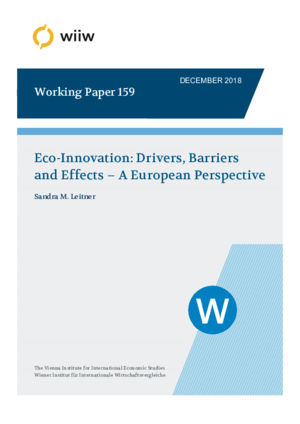Eco-Innovation: Drivers, Barriers and Effects – A European Perspective
wiiw Working Paper No. 159, December 2018
39 pages including 10 Tables and 1 Figure
This paper determines the key drivers, barriers and effects of eco-innovation, in comparison to innovation in general. It further distinguishes between different types of eco-innovations to better capture their heterogeneous nature. It uses two different data sets: (1) the Community Innovation Survey 2014 (CIS-2014) for a large sample of EU Member States, further split up into three groups in accordance with their eco-innovation performance; (2) the German Mannheim Innovation Panel to address additional drivers the CIS-2014 is unable to capture. Results show that both R&D investments and complementary fixed capital investments are key drivers of eco-innovation, with differences across country groups. Results from the German sample further emphasise that expected future demand, rising costs for energy and other resources and the wish to improve one’s reputation and the need to meet industry standards help spur eco-innovation, while public policy is only of limited importance. In contrast, international market orientation turns out to be a barrier for eco-innovation. By and large, eco‑innovations also have a productivity-enhancing effect which is however lower as compared to innovations in general.
Keywords: eco-innovation, demand pull, technology push, public policy, Europe
JEL classification: Q55, O33, O38
Countries covered: Bulgaria, Croatia, Cyprus, Estonia, Finland, Germany, Greece, Hungary, Latvia, Lithuania, Luxembourg, Malta, Romania, Slovakia, Sweden
